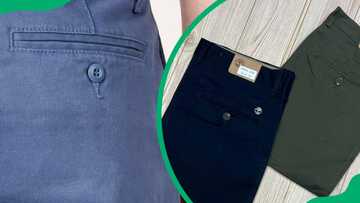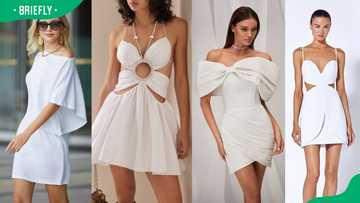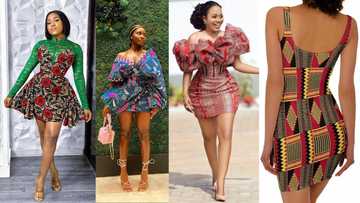A guide to the different types of ties and when to wear them
From casual to formal, ties are versatile accessories that elevate any look. However, with so many styles to choose from, it can be overwhelming. In this guide, you will learn about the different types of ties and receive tips on when to wear them, ensuring you can always confidently make a stylish statement.
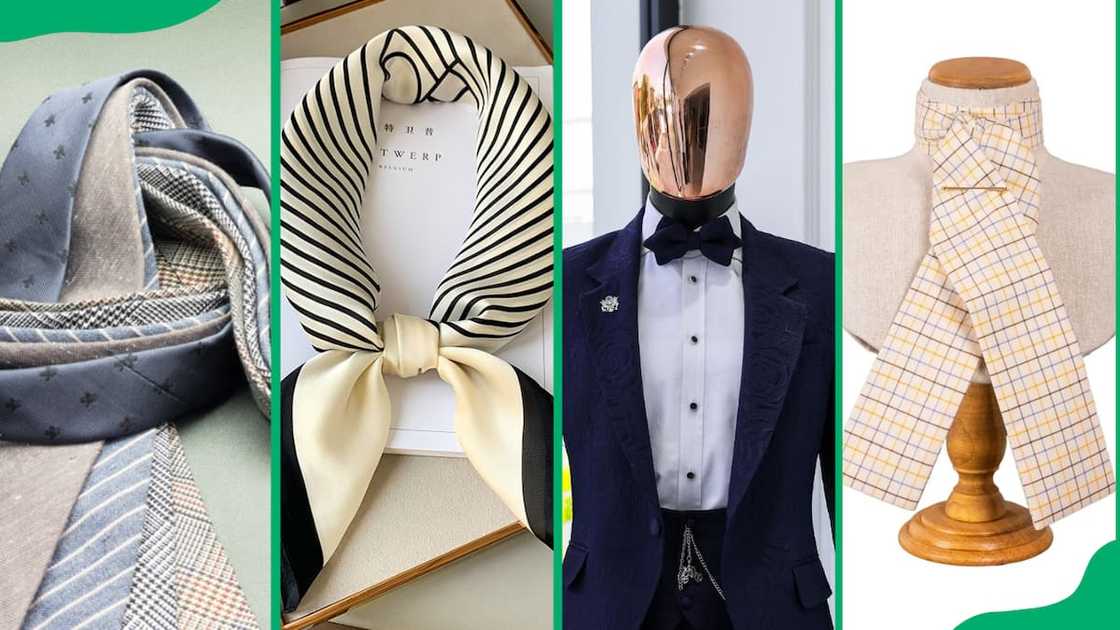
Source: UGC
TABLE OF CONTENTS
- What are the different types of ties for suits?
- What is the classification of ties?
- What are different ties called?
- Are all ties the same length?
- How long is a standard necktie?
- How many ties should a man own?
- What is the difference between skinny and classic ties?
- What is Colonel Sanders' tie called?
- What kind of tie is formal?
Since the early 20th century, the modern necktie, or tie, has been a cornerstone of men's fashion. Beyond understanding the appropriate number of ties a man should possess, it is crucial to own the suitable types. Even with a sufficient collection, ties become only helpful if they complement your attire. Here is an exclusive guide detailing various kinds of ties and how to style them.
What are the different types of ties for suits?
There are various necktie options for suits, each serving a unique purpose. Here are some types of neckties you can choose from:
Solid necktie
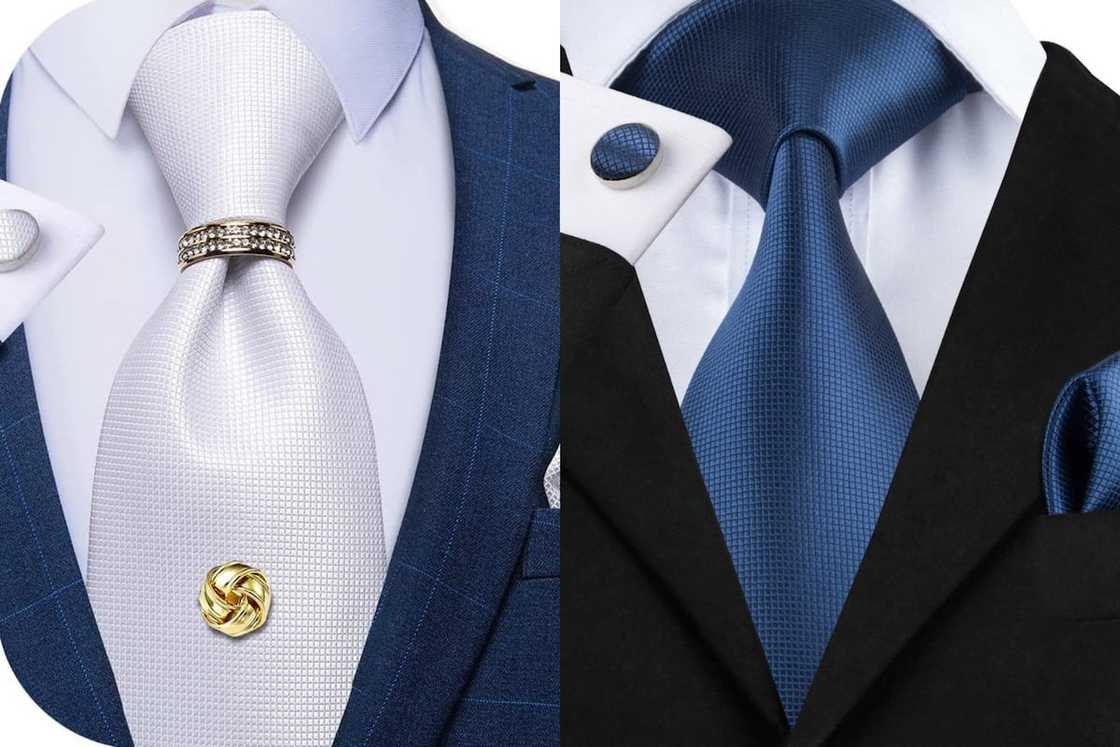
Source: UGC
This tie exudes professionalism and sophistication, a staple in every gentleman's wardrobe. Crafted with precision stitching, it is the go-to choice for formal meetings and events, ensuring a polished and put-together look.
Cravat necktie
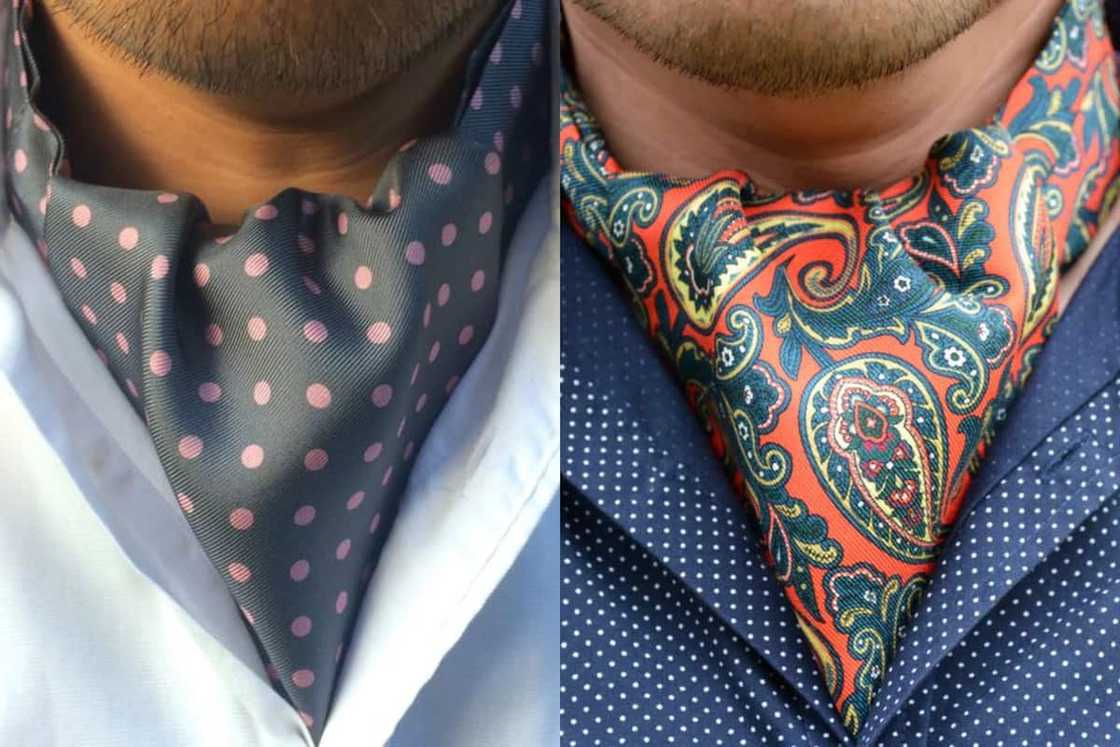
Source: UGC
Harkening back to 17th-century European fashion, the cravat necktie epitomises aristocratic elegance and refinement. Originally worn by royalty and military leaders, it has evolved into a symbol of sartorial sophistication, perfect for formal occasions and special events.
Bowtie
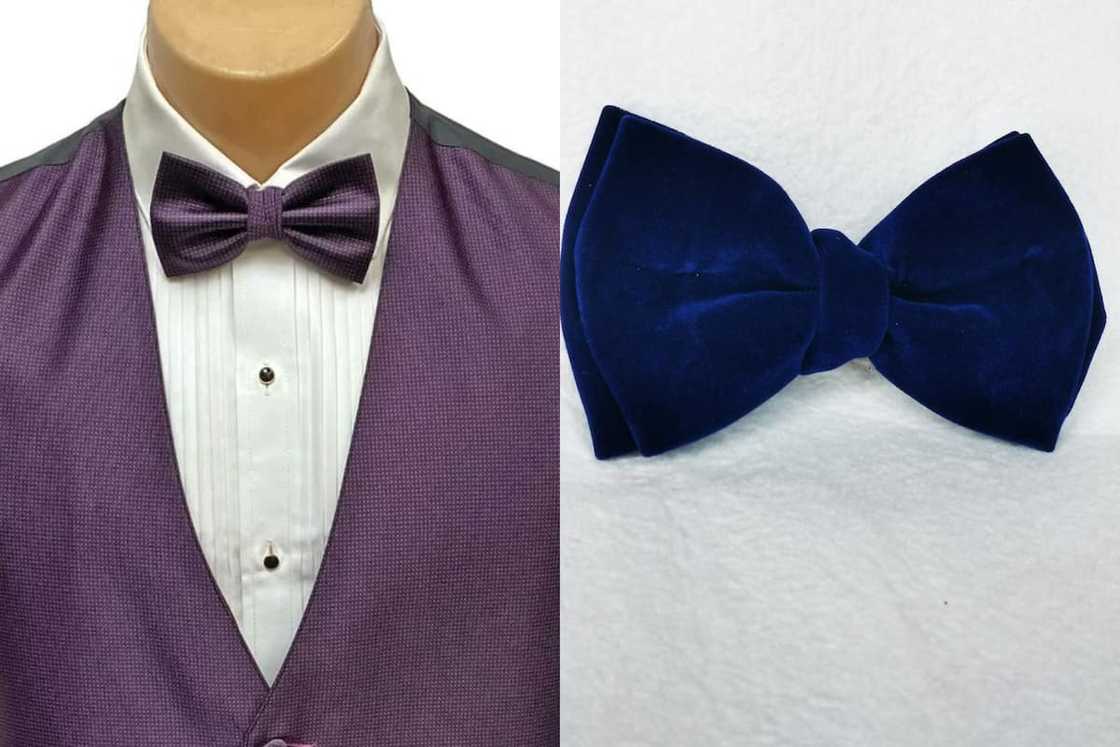
Source: UGC
A symbol of classic style and dapper charm, the bowtie is a timeless accessory adorned by gentlemen for centuries. From black-tie galas to whimsical cocktail parties, its symmetrical design adds a playful yet sophisticated touch to any ensemble.
Four-in-hand tie
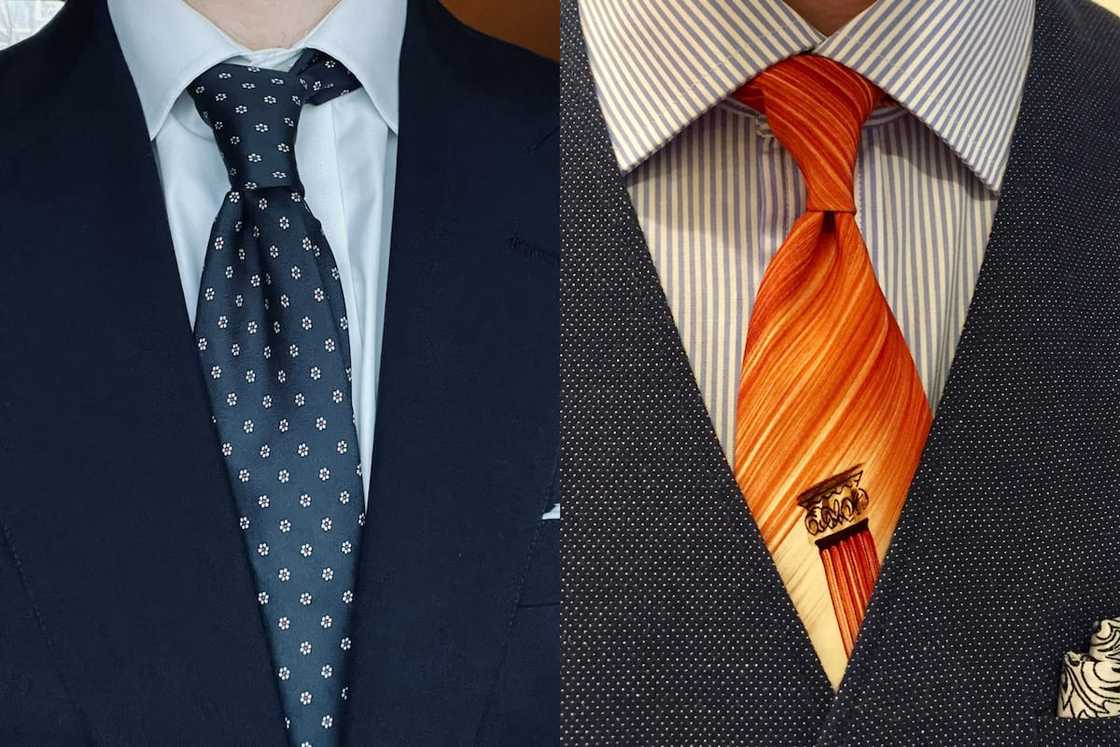
Source: UGC
Versatile and timeless, the four-in-hand tie has stood the test of time since its inception in the late 19th century. Named after the famous horse-drawn carriage, it remains a staple in men's fashion, offering endless possibilities for formal and casual wear.
Bolo tie
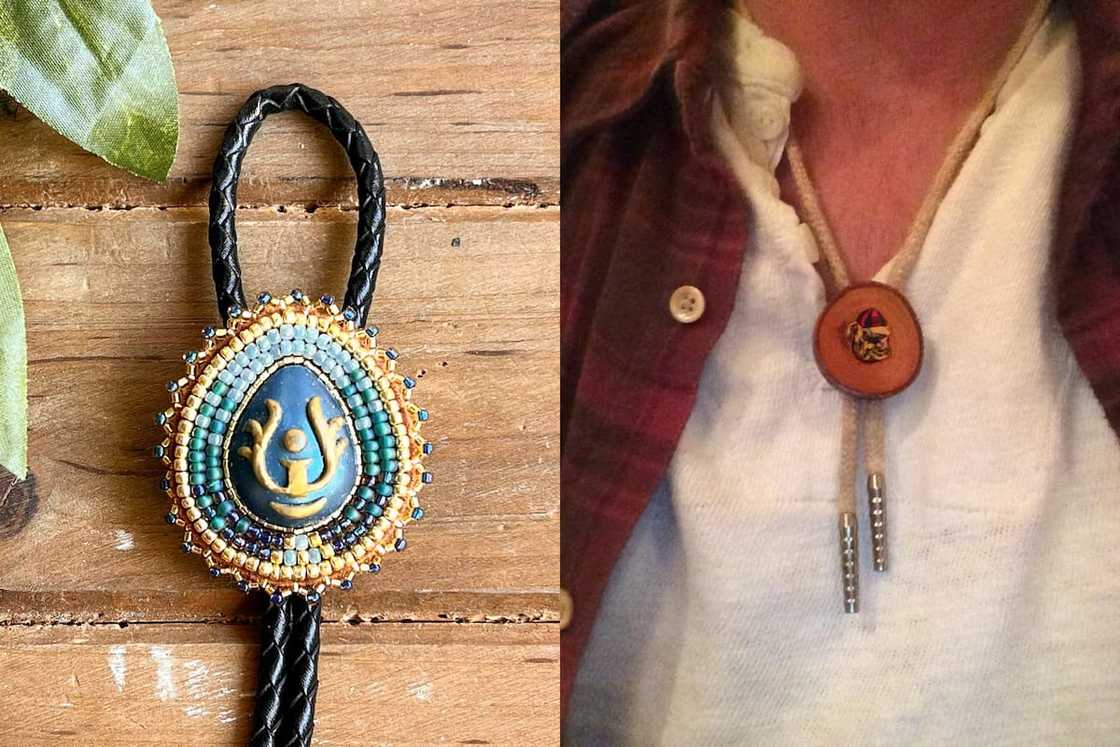
Source: UGC
Originating from Native American culture in the 1940s, the Bolo tie symbolises Western heritage and rugged individuality. Crafted from braided leather or rope, it adds a touch of rustic charm to casual attire and embodies the spirit of the American frontier.
Sailor tie
Inspired by nautical traditions, the sailor tie pays homage to the bravery and camaraderie of seafaring adventurers. Dating back to the golden age of sailing in the 18th century, it adds a touch of maritime charm to modern attire, evoking the spirit of exploration and adventure.
Hunting stock tie
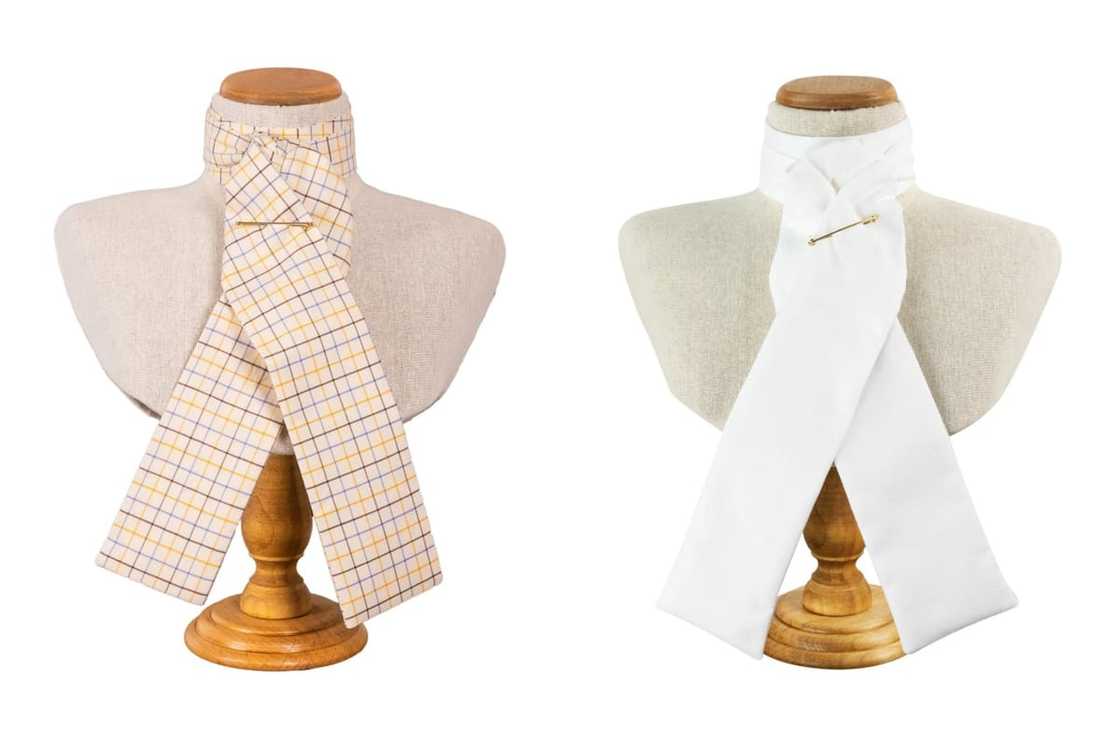
Source: UGC
Rooted in the rich traditions of equestrian sports, the hunting stock tie epitomises the timeless elegance of English country pursuits. Dating back to the 18th century, it adds a touch of refinement to show ring attire, evoking the spirit of tradition and sporting heritage.
Clip-on tie
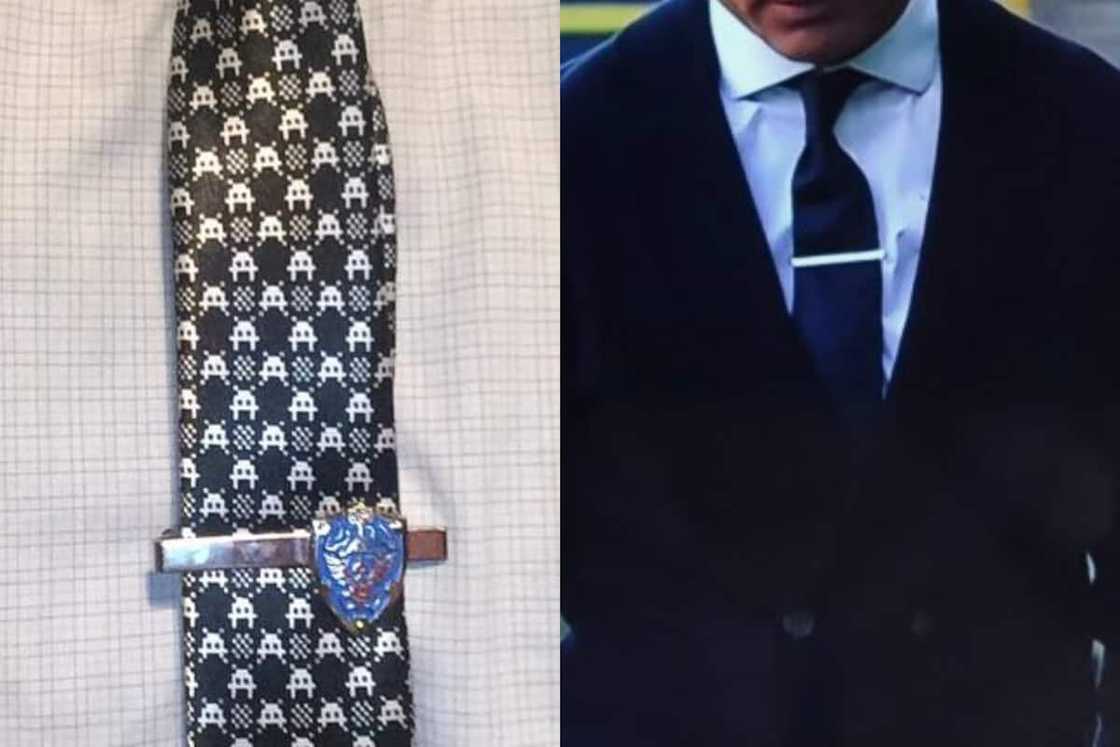
Source: UGC
A modern convenience born out of necessity, the clip-on tie offers effortless style without the hassle of tying knots. Ideal for busy professionals and those with mobility impairments, it ensures a polished look with minimal effort, blending convenience with timeless elegance.
Neckerchief
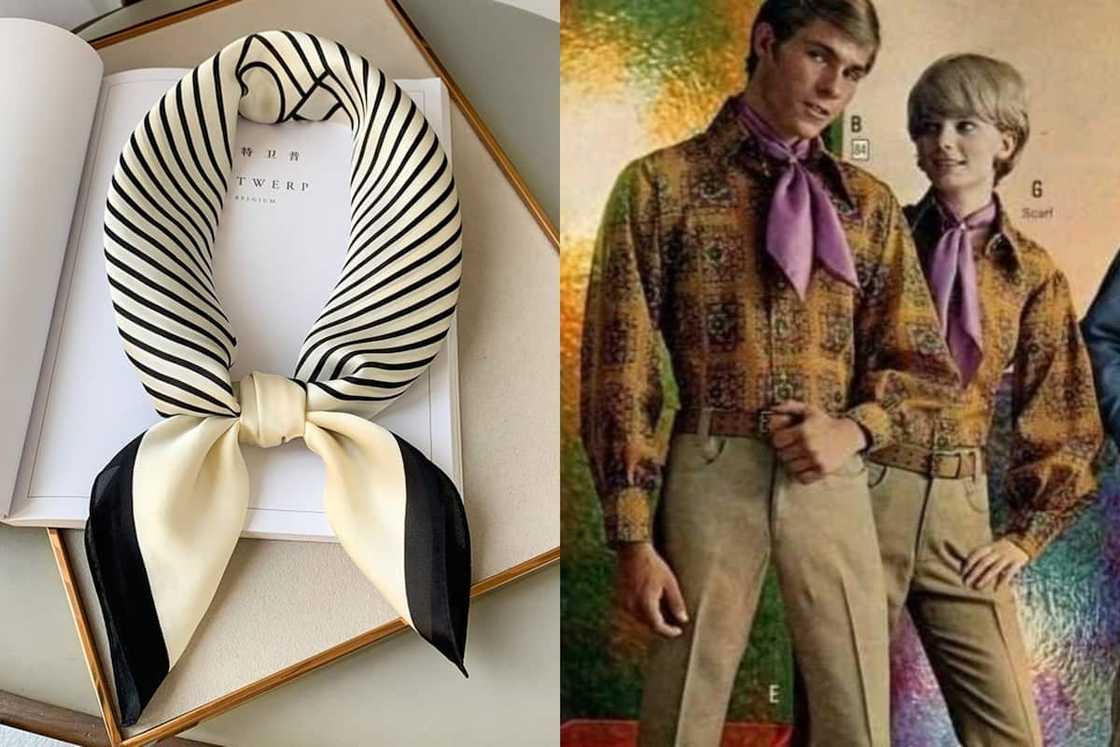
Source: UGC
A symbol of youthful rebellion and countercultural cool, the neckerchief adds a touch of edgy flair to casual attire. Popularised by rebellious icons of the 1960s and 70s, it remains a versatile accessory for those who march to the beat of their drum.
7-fold tie
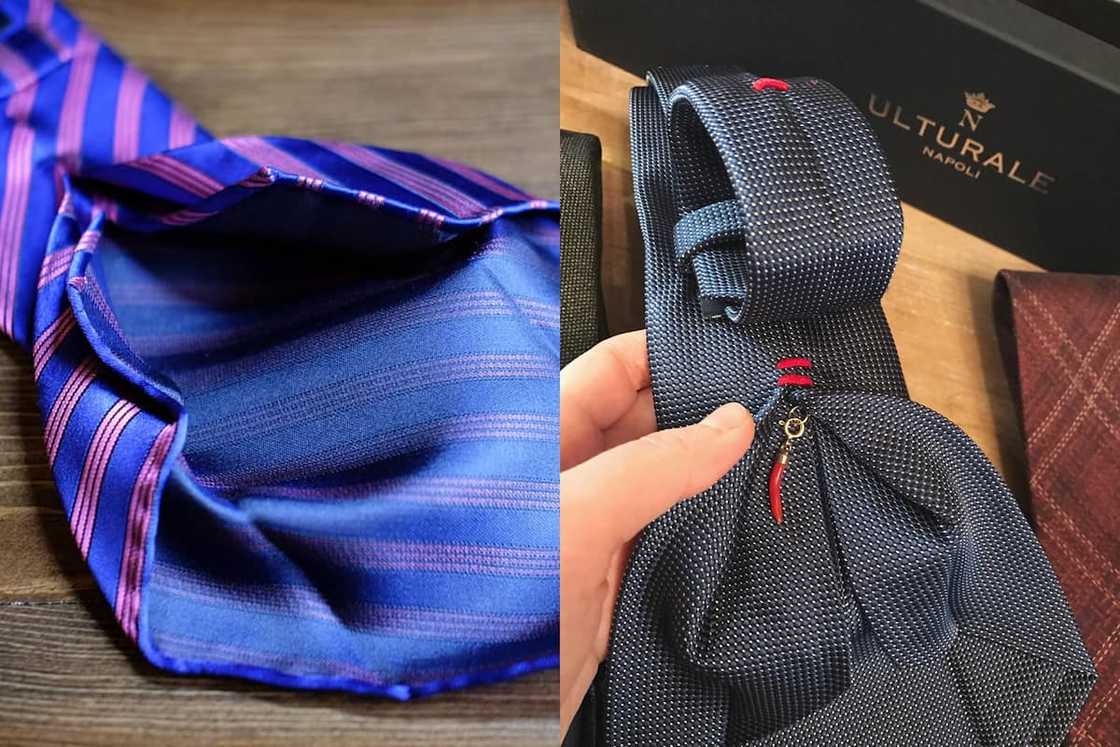
Source: UGC
A symbol of luxury and craftsmanship, the 7-fold tie epitomises the artistry of traditional tailoring. Dating back to the early 20th century, it is meticulously crafted from folded cloth, offering unparalleled elegance and sophistication for the discerning
Skinny tie
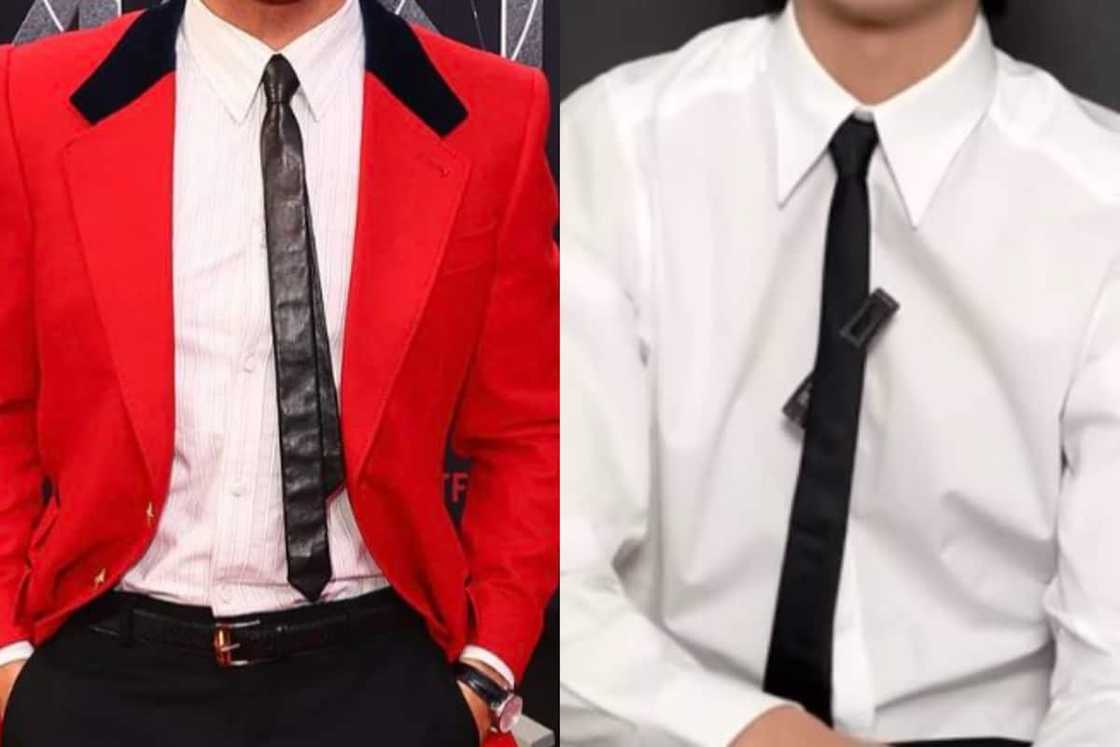
Source: UGC
A product of modern minimalist style, the skinny tie offers a sleek and contemporary alternative to traditional neckwear. Popularised in the 1960s and 70s, it remains a symbol of youthful sophistication, perfect for the fashion-forward gentleman.
Patterned necktie
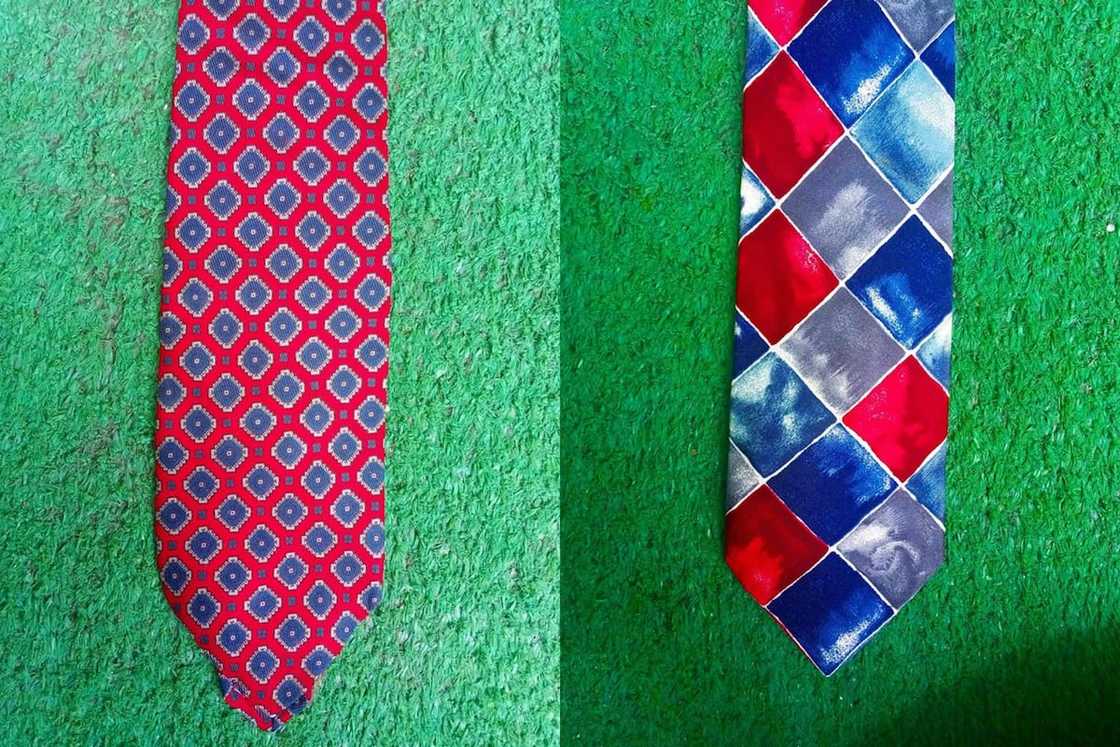
Source: UGC
From classic tartans to whimsical paisley prints, the patterned necktie offers endless possibilities for self-expression and style. Whether formal or casual, it adds a pop of personality to any outfit and makes a bold statement with every knot.
What is the classification of ties?
Ties can be classified in several ways, including the following:
- Fabric: Made from various fabrics, such as silk, wool, cotton, linen, and polyester.
- Width: Skinny (2-2.5 inches), standard (3-3.5 inches), or wide (3.5-4 inches).
- Knots: Various knots, like the Windsor, Half Windsor, and Four-in-Hand.
- Patterns: Solid, striped, checked, paisley, or floral patterns.
What are different ties called?
There are different types of ties, each with its unique style and purpose. From classic silk to trendy skinny ties, cravats, bows, and ascots, each complements different outfits and occasions.
Are all ties the same length?
Ties come in various lengths tailored to different heights and styles. Here is a tailored guide:
- For men under 5'10", aim for ties between 54 and 57 inches long. A narrower tie maintains a classic look.
- For men between 5'10" and 6'2," go for ties 57-59 inches long and 2-2 1/2 inches wide.
- For men over 6'3", go for ties 61-63 inches long and at least 3 inches wide, matching the width of your jacket lapels.
- For men over 6'7", opt for ties exceeding 67 inches. These extra-long ties accommodate very tall individuals while ensuring proper length and proportionality.
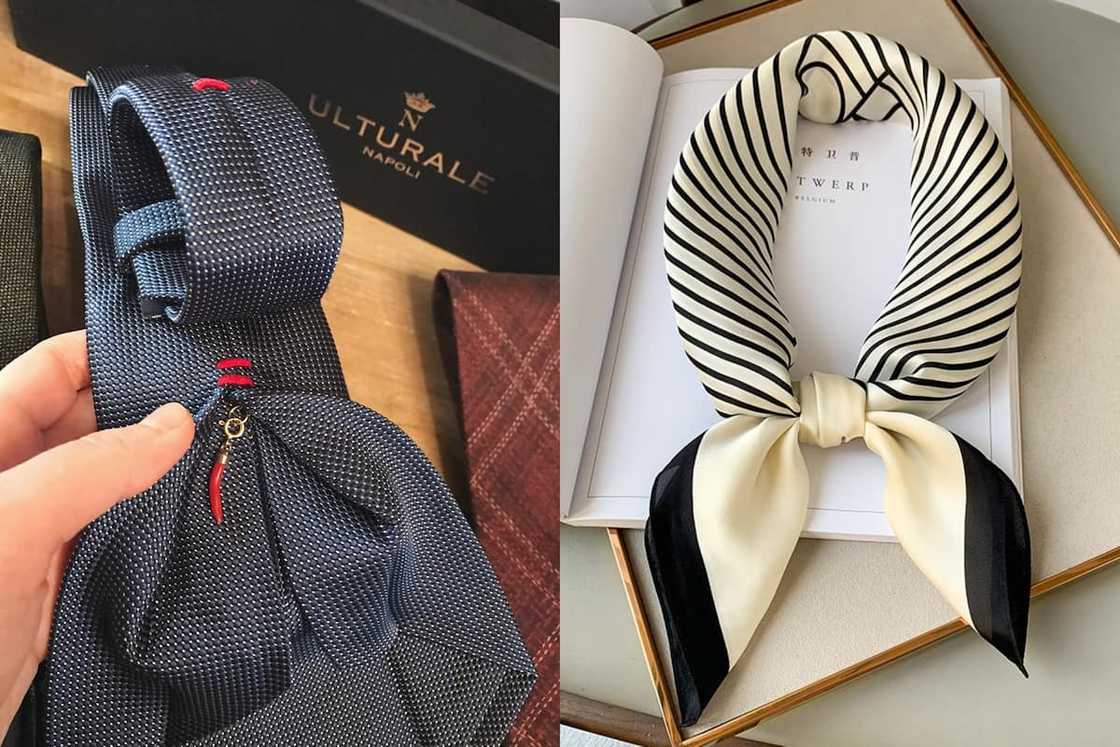
Source: UGC
How long is a standard necktie?
A standard necktie typically measures 57 to 58 inches (144 to 147 cm) long, making it the most commonly worn length today. This length provides enough versatility to fit most men comfortably and allows for tying various knots.
Ideally, the tip should reach the wearer's belt, with the wide end touching the top. Standard ties are generally suitable for men under six feet tall, although some individuals with specific body types may require a longer or shorter length.
How many ties should a man own?
The number of ties a man should own varies depending on factors such as occupation and frequency of wearing. While there are no strict rules, a well-curated collection is preferable to an excess.
For working professionals, a minimum of 10 to 12 is advised. This quantity allows for rotation, versatility in matching with different outfits, and the expression of personal style without redundancy.
What is the difference between skinny and classic ties?
Skinny ties are usually no wider than 2.5 inches (6.25 cm), whereas a slim tie would be no wider than 3 inches (7.5 cm). While skinny ties are mostly worn at formal events, they are best suited for casual occasions.
So, choosing between skinny vs normal ties comes down to personal preference. You might consider the width, occasion, body type, and style.
What is Colonel Sanders' tie called?
The tie worn by KFC founder Colonel Sanders is commonly known as a Western-style or string bow tie. It features a slim bow with hanging tails and is popular in the southern United States, particularly with linen suits.
What kind of tie is formal?
For formal events like weddings, black-tie occasions, and other formal gatherings, a silk or satin necktie is the most suitable choice due to its luxurious appearance. Traditional colours such as black, navy blue, charcoal, or dark grey are preferred to match or complement the suit and shirt.
With the availability of different types of ties, choosing the proper style is vital for a man's attire, as each style complements different occasions and settings. Always consider the event's formality, outfit, and the impression you wish to convey.
READ ALSO: Chinos vs khakis: Key differences and top styling tips for men
As published on Briefly, the chinos vs khakis debate has been a longstanding topic of discussion. Both khakis and chinos offer a simple yet well-put-together addition to any man's wardrobe.
However, there are some key differences between the two that can help you master your style game and make informed choices when curating your outfits.
Source: Briefly News

